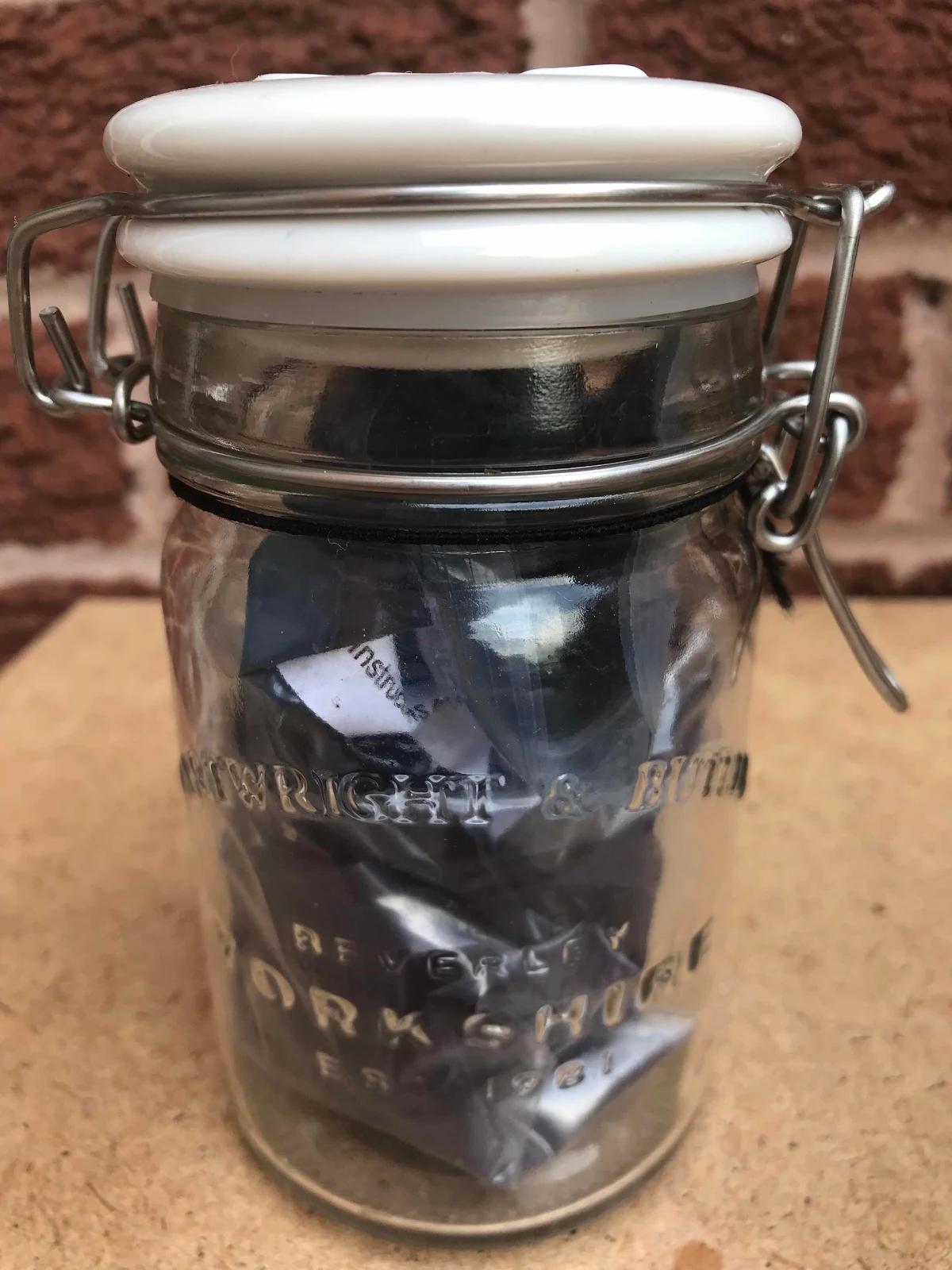Ingredients
Boiled water 1 lt
Sodium Alginate SH
Coconut oil
Liquid latex
Urea
Pigments for colour
Clove essential oil
Equipment needed. I chose to do this outside to prevent fumes affecting me.
Mixing and heating up screen ink. The first batch I made was too thin. When adding the sodium Alginate
You need quite a lot, however it needs to be sprinkled in very slowly for quite a while. I used a coffee whisker to help which I need to put new batteries in.
So it needs a few teaspoons to make it thick, not too sure if I will need to make more even thicker.
Add a drop of clove essence to stop the ink going off, also you need a gram of urea for every 250 ml you make. Adding the liquid latex last. Needing about 50/ 50 of alginate binder to 50 latex. This might change it depends how it prints.
I will add pigment dissolved in hot water 1 teaspoon 50/50 amount. Woad/Indigo pigment.

Indigo and Woad pigment for dying and ink making.
Indigo and Woad pigment for dying and ink making.
Ancient Japanese Lino ink recipe.
Considering health and safety when using natural oigments that can harm skin, eyes and lungs. Wear the right equipment.
Equipment and materials
Pigment for colour.
Gin
Natural starch adhesive.
Magnesium Carbinate to thicken
Spatula knife to mix ink.
Gloves, goggles, mask.
This is used to thicken ink so it spreads better and sticks to lino. In ancient times it wood have been a wood cut that the ink was being applied too.
Recipe for Moku Hanga ink. Ancient Japanese ink.
Inks
Screen printing inks from the university print room.
Ink used from print room, this ink is not eco conscious. I have made my base and I am going to replicate the colour by using indigo pigment.
Japanese Moluccan Hanga ink
This ink is an ancient recipe using non toxic ingredients which links to the green approach to designing and making.
It’s very simple to make mixing pigment 50/50 with gin and adding 1/2 teaspoons of Nori paste again an organic glue. Also one teaspoon of magnesium carbonate which is a bit dangerous if it gets on your eyes and also breathing in. Therefore goggles gloves and a mask are best used when mixing. I also worked outside were there was plenty of fresh air.
The texture of this ink needs more development.
| Printed ink. |
Shopping locally for ingredients helps with the reduction of climate change.
The Japanese ancient ink recipe.
This shows the consistency of the ink.
| Lino inked for printing. |
Print using Moku Hanga ink.
Evaluation.
The ink I have made has a good consistency, however when it is rolled onto the man made Lino it isn’t rolling out well. My conclusion is that this isn’t working as well as I would like it too.
More development in this area would be needed, however I might be able to block print these using my screen printing ink?
More development in this area would be needed, however I might be able to block print these using my screen printing ink?